Loading
Journal of Cellular Immunology
ISSN: 2689-2812
Most Read Articles
A Review of the Possibility of Nafamostat Mesylate in COVID-19 Treatment
Ji-Young Rhee
Nafamostat mesylate is a synthetic serine protease inhibitor, which inhibits various enzyme systems such as coagulation and fibrinolytic systems, the kallikrein–kinin system, the complement system, and the activation of protease-activated receptors. It also inhibits lipopolysaccharide-induced nitric oxide production, apoptosis, and interleukin (IL)-6 and IL-8 levels in cultured human trophoblasts.
J Cell Immunol, 2021, Volume 3, Issue 1, p1-7 | DOI: 10.33696/immunology.3.069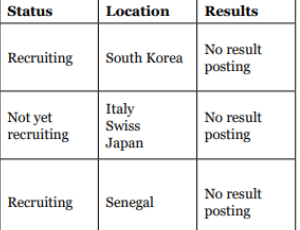
Glucose Metabolism is a Better Marker for Predicting Clinical Alzheimer’s Disease than Amyloid or Tau
Tyler C. Hammond , Ai-Ling Lin
Alzheimer’s disease (AD) research has long been dominated with communications regarding the amyloid hypothesis and targeting amyloid clearance through pharmacological therapies from the brain. Unfortunately, this research strategy has yielded only one new FDA-accelerated approved therapeutic for early AD, and its clinical benefit still needs to be verified. It may be time to employ a new strategy in AD therapeutics research. Hammond et al. reported that diminished uptake of glucose in the brain is a better marker for classifying AD than beta-amyloid (Aβ) or phosphorylated tau deposition.
J Cell Immunol, 2022, Volume 4, Issue 1, p15-18 | DOI: 10.33696/immunology.4.128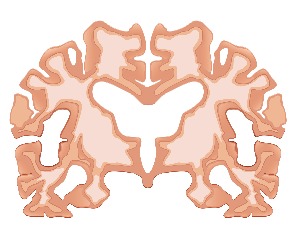
The Interplay between Transcription Factor SALL4 and Histone Modifiers in Hematopoietic Stem and Progenitor Cells
Hiro Tatetsu , Daniel G. Tenen , Li Chai
Currently, there is a growing need for culturing hematopoietic stem/progenitor cells (HSPCs) ex vivo for various clinical applications such as HSPC transplantation and gene therapy. For many patients with hematologic, genetic, and immune diseases, HSPC transplants can be a life-saving treatment. There are over 20,000 patients in the US receiving HSPC transplantation yearly.
J Cell Immunol, 2021, Volume 3, Issue 1, p26-30 | DOI: 10.33696/immunology.3.073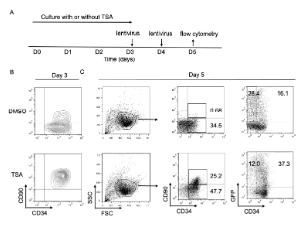
CAR-T cell Goes on a Mathematical Model
Luciana Rodrigues Carvalho Barros , Brendon de Jesus Rodrigues , Regina C Almeida
CAR-T cell immunotherapy is a great advance in hematological cancers treatment. New CARs and therapy schemes are being developed and a mathematical model could contribute to a rational design of treatment. Here we comment and show new results with previously published models of CAR-T cell therapy, emphasizing the contribution of initial tumor load, the proliferation of CAR-T cell and inhibition of CAR-T cell activity by the tumor resulting in different scenarios as tumor escape, equilibrium (stable disease) and tumor elimination.
J Cell Immunol, 2020, Volume 2, Issue 1, p31-37 | DOI: 10.33696/immunology.2.016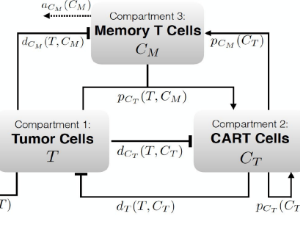
The Role of Myeloid Populations during Perinatal Liver Injury and Repair
Anas Alkhani , Sarah Mohamedaly , Amar Nijagal
Perinatal liver inflammation can have life-threatening consequences, particularly in infants and young children. An example of a hepatic inflammatory disease during infancy is biliary atresia (BA), an obliterative cholangiopathy that rapidly progresses to hepatic fibrosis and liver failure.
J Cell Immunol, 2021, Volume 3, Issue 1, p42-45 | DOI: 10.33696/immunology.3.076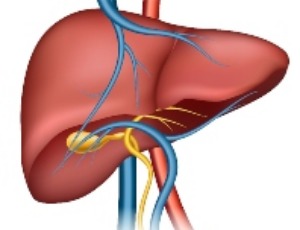
Inulin Supplementation Mitigates Gut Dysbiosis and Brain Impairment Induced by Mild Traumatic Brain Injury during Chronic Phase
Lucille M. Yanckello , Brian Fanelli , Scott McCulloch , Xin Xing , McKenna Sun , Tyler C. Hammond , Rita Colwell , Zezong Gu , Aaron C. Ericsson , Ya-Hsuan Chang , Adam D. Bachstetter , Ai-Ling Lin
Mild traumatic brain injury (mTBI) has been shown to acutely alter the gut microbiome diversity and composition, known as dysbiosis, which can further exacerbate metabolic and vascular changes in the brain in both humans and rodents. However, it remains unknown how mTBI affects the gut microbiome in the chronic phase recovery (past one week post injury). It is also unknown if injury recovery can be improved by mitigating dysbiosis. The goal of the study is to fill the knowledge gap.
J Cell Immunol, 2022, Volume 4, Issue 2, p50-64 | DOI: 10.33696/immunology.4.132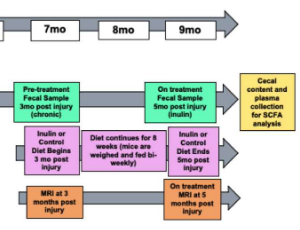
Can Molecular Biomarkers be Utilized to Determine Appropriate Adjuvant Therapy in Early-Stage Non-Small Cell Lung Cancer (NSCLC)?
Prashanth Ashok Kumar , Alina Basnet , Stephen Graziano
Early-stage NSCLC, encompassing resectable stage I-III are curable, and represents 25% of all lung cancers. The management of non-metastatic NSCLC is a rapidly changing area of clinical oncology, where utilization of molecular biomarkers has become a cornerstone in informing appropriate management. In current clinical practice, adjuvant chemotherapy is recommended after surgical resection for tumors ≥ 4 cms in size (AJCC 7th stage IB, AJCC 8th stage IIA, and higher stage groups thereafter).
J Cell Immunol, 2024, Volume 6, Issue 2, p82-86 | DOI: 10.33696/immunology.6.193
M1 and M2 Macrophages Polarization via mTORC1 Influences Innate Immunity and Outcome of Ehrlichia Infection
Ibrahim Ahmed , Nahed Ismail
Human monocytic ehrlichiosis (HME) is an emerging life-threatening tick-borne disease caused by the obligate intracellular bacterium Ehrlichia chaffeensis. HME is often presented as a nonspecific flu-like illness characterized by presence of fever, headache, malaise, and myalgia. However, in some cases the disease can evolve to a severe form, which is commonly marked by acute liver injury followed by multi-organ failure and toxic shock-like syndrome.
J Cell Immunol, 2020, Volume 2, Issue 3, p108-115 | DOI: 10.33696/immunology.2.029
Updates of Recent Vinpocetine Research in Treating Cardiovascular Diseases
Chongyang Zhang , Chen Yan
Vinpocetine is a derivative of vincamine. It has been used to prevent and treat cerebrovascular disorders such as stoke and dementia, and remains widely available in dietary supplements that often marketed as nootropics. Due to its excellent safety profile at therapeutic dose regimen, vinpocetine has raised research interest in its new applications in various experimental disease models.
J Cell Immunol, 2020, Volume 2, Issue 5, p211-219 | DOI: 10.33696/immunology.2.045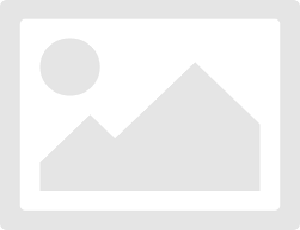
Hypomagnesemia and Outcomes in Hematologic Malignancies
Jennifer Gile , Joy Heimgartner , Gordon Ruan , M. Molly McMahon , Thomas Witzig
Magnesium, the fourth most abundant mineral in the human body, has several critically important functions in the body including cell growth, energy production and function of the immune system. There is an increasing interest in the role of magnesium in the pathology of different diseases including diabetes, cardiovascular disease and malignancies.
J Cell Immunol, 2020, Volume 2, Issue 5, p245-249 | DOI: 10.33696/immunology.2.050
Exploring and Targeting the Tumor Immune Microenvironment of Neuroblastoma
Katherine E. Masih , Jun S. Wei , David Milewski , Javed Khan
Neuroblastoma is derived from the developing sympathetic nervous system and is the most common extracranial solid tumor of childhood.
J Cell Immunol, 2021, Volume 3, Issue 5, p305-316 | DOI: 10.33696/immunology.3.111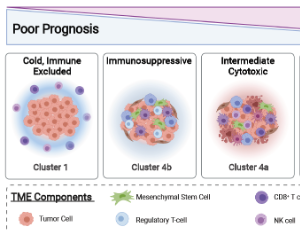
Newly Identified Function of Caspase-6 in ZBP1-mediated Innate Immune Responses, NLRP3 Inflammasome Activation, PANoptosis, and Host Defense
Min Zheng , Thirumala-Devi Kanneganti
Caspase-6 was discovered decades ago, but its roles in biological processes remain largely unknown. Recently, we have demonstrated that caspase-6 plays a critical role in influenza A virus (IAV)-induced cell death and innate immune responses. During IAV infection, Z-DNA binding protein 1 (ZBP1) initiates ZBP1-PANoptosome assembly to drive inflammasome activation and cell death, and we showed that caspase-6 interacts with RIPK3 to enhance the interaction between RIPK3 and ZBP1, thus promoting PANoptosome assembly.
J Cell Immunol, 2020, Volume 2, Issue 6, p341-347 | DOI: https://doi.org/10.33696/immunology.2.064
Human Gray and White Matter Metabolomics to Differentiate APOE and Stage Dependent Changes in Alzheimer’s Disease
Tyler C. Hammond , Xin Xing , Lucy M. Yanckello , Arnold Stromberg , Ya-Hsuan Chang , Peter T. Nelson , Ai-Ling Lin
Alzheimer’s disease (AD) is the most common form of dementia with hallmarks of ß-amyloid (Aß) plaques, tau tangles, and neurodegeneration. Studies have shown that neurodegeneration components, especially brain metabolic deficits, are more predictable for AD severity than Aß and tau. However, detailed knowledge of the biochemical composition of AD brain tissue vs. normal brain tissue remains unclear.
J Cell Immunol, 2021, Volume 3, Issue 6, p397-412 | DOI: 10.33696/immunology.3.123
About Scientific Archives
Scientific Archives is a global publisher initiated with the mission of ensuring equal opportunity for accessing science to research community all over the world. Spreading research findings with great relevance to all channels without any barrier is our goal. We want to overcome the challenges of Open Access with ensured quality and transparency.
